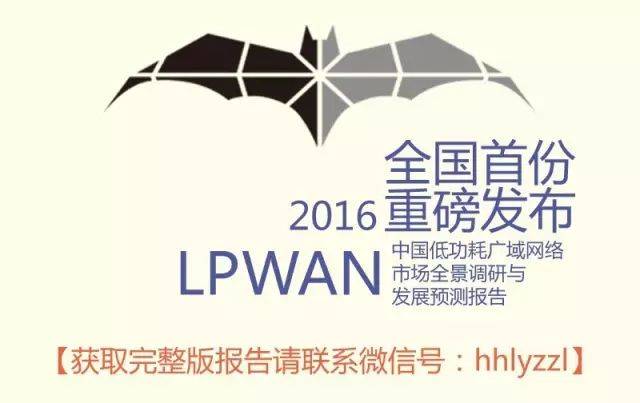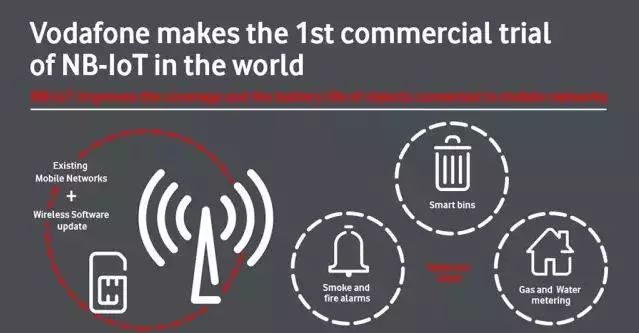
Author: Zhao Xiaofei
IoT Think Tank Original
Reprint must indicate the source and origin
—— [Introduction] ——
Operators face a more complex environment in the low-power wide-area network field, with different choices for network deployment paths, including single-path choices and hybrid networking options.

The low-power wide-area network is still evolving. As one of the core participants in this industry, telecom operators’ dynamics in this area have always attracted close attention from the IoT industry. When will large-scale deployment occur? Which technology standards will be chosen? What industry applications have been developed? Any slight movement draws the industry’s attention. However, the characteristics of IoT applications and the flexibility of low-power wide-area networks have led to a diversified operational landscape. Operators face a more complex environment in the low-power wide-area network field, with different choices for network deployment paths. This article aims to analyze the deployment paths of low-power wide-area networks.
Mainstream operators are steadfastly promoting the deployment of LPWAN, but the deployment paths vary.
Following the global promotion of NB-IoT and LoRa in recent months, this month has seen significant progress from several major operators in the low-power wide-area network field:
On September 12, Japanese telecom operator SoftBank announced plans to launch an IoT network based on LoRaWAN in Japan during the 2016 fiscal year. SoftBank has partnered with IoT platform providers Actility, Hon Hai Precision Industry, and Semtech to provide end-to-end IoT solutions.
On September 19, European telecom operator Vodafone announced that it has completed the world’s first standardized NB-IoT commercial network trial based on existing networks in Madrid, Spain, using existing 4G base stations to support NB-IoT technology, connecting in the 800MHz authorized frequency band. This test is the last important milestone before Vodafone’s NB-IoT officially goes commercial in 2017.
On September 20, French telecom operator Orange announced that it has exceeded its deployment targets for IoT based on LoRa technology. In November 2015, Orange publicly announced its LoRa deployment plan, setting a target to deploy LoRa IoT networks in 17 cities in France, including Bordeaux, Lyon, and Paris, during the first half of 2016. By the first half of 2016, Orange had deployed LoRa IoT networks in 18 cities, covering 1,300 towns under its jurisdiction.

Mainstream operators in Europe and Asia have begun to implement low-power wide-area networks. However, a careful analysis of their paths to commercializing low-power wide-area networks reveals two clear paths:
(1) A firm single-path approach. Vodafone is a typical representative of this choice. Among global operators, Vodafone is the most steadfast promoter of NB-IoT, not only as a core promoter in the standard-setting process but also actively practicing and accelerating the move towards full commercialization across various industry applications in Europe, Australia, and other regions.
(2) A dual approach with integration. Many operators currently choosing to deploy LoRa networks on a large scale also plan to deploy NB-IoT networks in the future, integrating the two. For example, SoftBank announced that after deploying the LoRa network, it will continue to deploy IoT networks based on Cat-M1 and NB-IoT; although Orange is building a LoRa network, it has previously indicated that it will also deploy an NB-IoT network once the conditions for large-scale commercialization are met.
Exploring the Logic Behind Operators’ LPWAN Path Choices
From a global market perspective, operators choosing the single-path NB-IoT approach generally focus all their efforts on this, rarely considering other technologies. However, in my view, operators currently choosing to deploy LoRa networks are likely to lean towards deploying an NB-IoT network later (of course, based on cost-benefit analysis). For large mainstream operators, it is rare to firmly choose a single LoRa network. I believe the behavior of enterprises can be understood from several aspects:
(1) Consideration of market sunk costs. Market sunk costs mainly apply to enterprises choosing the single-path NB-IoT approach. For those investing significant resources to promote NB-IoT, the costs incurred before the network officially operates are sunk costs. In the current environment, since the LoRa industrial ecosystem is more mature and network deployment is more flexible, if operators do not choose LoRa technology for network deployment during this period, when the NB-IoT industrial ecosystem matures and operational conditions are met, operators will need to focus on operating this network to offset the significant sunk costs incurred earlier. LoRa may only serve as a small-scale supplement and will not form large-scale deployment.
(2) Consideration of seizing the IoT market opportunity. This aspect mainly applies to operators that have currently chosen LoRa as their low-power wide-area network technology. Since LoRa is already suitable for commercial deployment and the industrial chain is relatively mature, operators can quickly complete commercial network deployment in a short time, thus providing connectivity services for various industry applications. In other words, during the window period before NB-IoT is commercially available, operators can gain a large number of early users in the low-power wide-area network field by deploying LoRa networks. As I analyzed in a previous article, due to the terminal lifecycle of IoT industry users, they will not change network service providers for several years, forming sticky users for operators. Compared to NB-IoT operators that will only be launched more than a year later, they have already gained a first-mover advantage in the industry.
(3) Accumulating experience in IoT network operations. Previous 2G/3G/4G operators’ networks primarily served human-to-human connections, while low-power wide-area networks are specifically designed for machine-to-machine connections. Accumulating experience in operating such networks is essential. As the chairman of Taiwan’s Asia Pacific Telecom stated: LoRa network deployment does not require seamless coverage but should be application-oriented and deployed as needed. Therefore, early deployment and operation of LoRa networks can help form experience in IoT network operations. NB-IoT, as a technical standard jointly developed by communication enterprises and institutions, is more suitable as a telecom-grade public network to provide IoT services, covering a wider range than the previous LoRa network, which was more focused on industry and enterprise services. As SoftBank mentioned in its IoT network plan, using multiple standards such as LoRa, NB-IoT, and eMTC will “ensure that it can effectively respond to different environments.” Thus, deploying LoRa networks in the early stages and then deploying NB-IoT when the ecosystem matures can also provide more experience for future NB-IoT network operations.
(4) Consideration of resource allocation. It is well known that LoRa operates in unlicensed frequency bands, while NB-IoT operates in licensed frequency bands. As a valuable resource for operators, the radio frequency spectrum should be utilized to its maximum potential. Currently, many operators worldwide are planning to phase out 2G/3G networks, freeing up spectrum resources for future 5G and IoT planning. Even if a nationwide LoRa network has already been deployed, for operators with the scarce resource of licensed spectrum, deploying an NB-IoT network can provide a more secure and interference-free network environment for their IoT users. This is necessary in the context of risks associated with unlicensed frequency networks. Moreover, NB-IoT occupies less spectrum resources and can be flexibly utilized in various ways.

Globally, the GSMA Association has announced that operators planning to deploy NB-IoT networks in 2017 generally do not have plans for large-scale commercial LoRa networks. However, in my view, operators currently choosing LoRa, especially mainstream operators in various countries (such as Tata, SK, etc.), are likely to build an NB-IoT network to form a hybrid network once conditions mature. Of course, in the domestic environment, due to factors such as intellectual property and regulation, telecom operators will choose to deploy a single-path NB-IoT network in licensed spectrum, while LoRa may be provided as a small-scale solution to enterprise customers.

Previous Hot Articles (Click on the title to read directly):
-
[When the “Mini Wafer Fab” technology matures, TSMC’s good days will come to an end]
-
[Three Major Investment Gurus Bet on IoT: Buffett, Li Ka-shing, and Masayoshi Son’s Deep Strategies
-
[Interview with Academician Wu Hequan: Four Good News Indicate That IoT Development Has Entered the Right Track
-
[China’s First Low-Power Wide-Area Network LPWAN Market Report Released: Where is the Next IoT Opportunity? [Text Version]
-
[A Cartoon Explains: What is LoRa Behind NB-IoT That Everyone is Talking About?
-
[What Can the Recently Popular NB-IoT Do Besides WiFi and Bluetooth?]
-
[McKinsey’s Heavy Report: How Can Enterprises Tap into the Value of “Industry 4.0”? (Collection Edition)

Hi, I am IoT101!
Regarding the Internet of Things,
Every word I say is not nonsense;
If you encounter any IoT-related issues,
Don’t call 110,
Just come to IoT101!